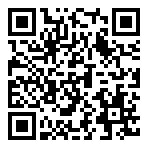
Children’s Eye Health and Safety Month
The American Academy of Ophthalmology sponsors this NHO with the goal of protecting and maintaining children’s eye health. The National Eye Institute (NEI) has lots of kid-friendly resources to help children learn about eye health. Find out about national objectives for improving the visual health of all Americans from the Healthy People 2020 topic area.
Overview
It’s important for all children to have their vision checked at least once between ages 3 and 5. Even if children don’t show signs of eye problems, they still need their vision checked. Finding and treating eye problems early on can save a child’s sight.
Healthy eyes and vision are very important to a child’s development. Growing children constantly use their eyes, both at play and in the classroom.
What are common eye problems in children?
These common eye problems can be treated if they are found early enough:
Other conditions — like being nearsighted or farsighted — can be corrected with glasses or contact lenses. Conditions like these are called refractive errors.
Is my child at risk for vision problems?
If your family has a history of childhood vision problems, your child may be more likely to have eye problems. Talk to the doctor about eye problems in your family.
Eye Exams
Eye exams are part of regular checkups.
The doctor will check your child’s eyes during each checkup, beginning with your child’s first well-baby visit.
Around age 3 or 4, the doctor will do a more complete eye exam to make sure your child’s vision is developing normally. If there are any problems, the doctor may send your child to an eye doctor.
See a Doctor
Follow these steps to protect your child’s vision.
Talk to your child’s doctor.
Ask the doctor or nurse if there are any problems with your child’s vision.
If the doctor recommends a visit to an eye care professional:
- Ask the doctor for the name of an eye doctor who is good with kids. You can also use these tips to find an eye doctor.
- Write down any information about your child’s vision problem.
- Plan your child’s visit to the eye doctor.
Cost and Insurance
What about cost?
Under the Affordable Care Act, the health care reform law passed in 2010, health insurance plans must cover vision screening for kids.
- If you have private insurance, your child may be able to get screened at no cost to you. Check with your insurance provider.
- Medicaid and CHIP also cover vision care for kids.
For information about other services for children that are covered by the Affordable Care Act, visit HealthCare.gov.
If you don’t have health insurance, check these websites for free or low-cost eye care programs for children.
Eye Problems
Look out for problems.
Schedule an eye exam for your child if you see signs of an eye problem, like if your child’s eyes:
- Look crossed
- Turn outwards
- Don’t focus together
- Are red, crusted, or swollen around the eyelids
Know the warning signs of vision problems in children.
Prevent Eye Injuries
Protect your child’s eyes.
- Don’t let your child play with toys that have sharp edges or points.
- Keep sharp or pointed objects, like knives and scissors, away from your child.
- Protect your child’s eyes from the sun with kids’ sunglasses that block 100% of UVA and UVB rays.
- Keep chemicals and sprays (like cleaners and bug spray) in places that kids can’t reach.
- Make sure your child wears the right eye protection for sports.
Get more tips on preventing eye accidents.
Vision Development
Help develop your child’s vision.
It takes skill to match up what we see with what we want to do — like when we want to bounce a ball or read a book.
Here are some activities that can help your child develop vision skills:
- Read to your child and let your child see what you are reading.
- Play with your child using a chalkboard, finger paints, or blocks.
- Take your child to the playground to climb the jungle gym and walk on the balance beam.
- Play catch with your child.
Are you playing in the 2022 Reality Health Games?
Earn your August Calendar CHAMP BADGE Here!
Event Attendees
No attendee found! Be the first one to book!




Responses